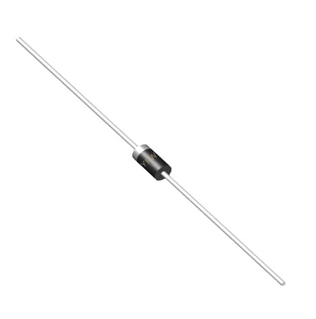Date:2025-06-05 Categories:Product knowledge Hits:377 From:Guangdong Youfeng Microelectronics Co., Ltd
Low-Voltage Rectification and Signal Detection
In low-voltage applications, such as solar cell panels or battery chargers, Schottky diodes are preferred for rectification because their low forward voltage drop helps to maximize the output voltage and efficiency. For example, in a solar panel system, a Schottky diode is connected in series with the solar cells to prevent reverse current flow when the solar panel is not generating enough power.
When using Schottky diodes for signal detection in radio frequency (RF) or low-level signal applications, their fast switching speed and low capacitance make them suitable. The diode is used to rectify the RF signal, converting it into a DC voltage that can be detected or processed.
Installation and Thermal Management
Soldering and Installation
When installing Schottky diodes, proper soldering techniques are essential to avoid damaging the device. The soldering temperature and time should be within the limits specified by the manufacturer. For most Schottky diodes, a soldering temperature of 260°C to 280°C and a soldering time of no more than 3 seconds are recommended.
Use a low-wattage soldering iron (e.g., 30W to 40W) and ensure that the soldering tip is clean. Apply the solder to the pad first, then place the diode lead on the pad and heat it gently until the solder melts and flows evenly. Avoid applying excessive mechanical stress to the diode leads during installation.
Thermal Considerations
Although Schottky diodes have lower power dissipation compared to traditional diodes, they still generate some heat when conducting current. Proper thermal management is important to prevent overheating, which can reduce the diode's performance and lifespan.
For diodes with higher power ratings, consider using heat sinks to dissipate the heat. The heat sink should be selected based on the power dissipation of the diode and the expected operating environment. Ensure that there is good thermal contact between the diode and the heat sink, and use thermal grease or pads to improve heat transfer.
In addition, ensure that the circuit board has sufficient copper area around the diode to act as a heat spreader. This can help to dissipate the heat more effectively, especially in high-current applications.
Testing and Troubleshooting
Basic Testing
To test a Schottky diodes, you can use a multimeter with a diode test function. Connect the positive probe of the multimeter to the anode of the diode and the negative probe to the cathode. In the forward direction, the multimeter should display a voltage reading corresponding to the forward voltage drop of the diode (typically 0.3V to 0.5V for Schottky diodes). In the reverse direction, the multimeter should indicate an open circuit (infinite resistance).
If the forward voltage reading is too high or too low, or if there is continuity in the reverse direction, the diode may be faulty and should be replaced.
Troubleshooting Common Issues
Excessive heating: If the Schottky diodes is overheating, check if the forward current is exceeding the rated value. This may be due to a short circuit in the load or an incorrect circuit design. Also, ensure that the thermal management measures, such as heat sinks, are properly implemented.
Premature failure: Premature failure of the diode may be caused by exceeding the reverse voltage rating, excessive current, or improper thermal management. Check the circuit for voltage spikes or transient overvoltages and ensure that the diode is properly protected.
Poor efficiency in power supply applications: If the efficiency of the power supply is lower than expected, check the forward voltage drop of the Schottky diode. Using a diode with a higher VF than necessary can lead to increased power loss. Consider replacing it with a diode with a lower VF.
By following these guidelines, you can effectively use Schottky diodes in your electronic circuits, taking advantage of their low forward voltage drop, fast switching speed, and other beneficial characteristics to achieve optimal performance and reliability.

Previous: Classification, Structure, and Principle of MOSFET